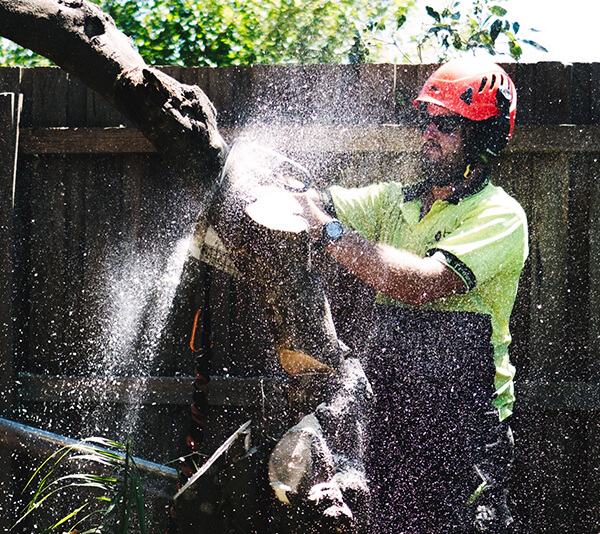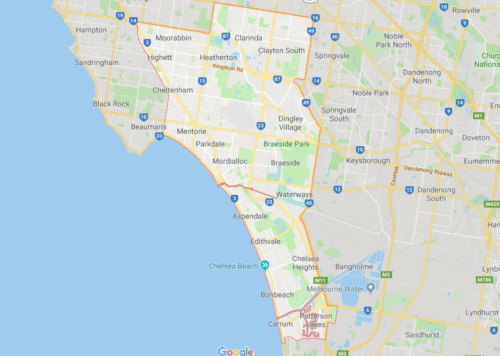Trimming, lopping and cutting down private trees in the City of Kingston Council is heavily regulated to ensure the preservation of the mature tree population and the environment. The local council aims to prevent any net loss of the city’s tree canopy, an objective they share with the State Government’s ‘Biodiversity Strategy’. To achieve this, the council have implemented local laws in addition to the state’s planning controls.
While these local laws are relatively straightforward compared to some of the regulations in neighbouring councils, it is essential that residents and property owners in the City of Kingston are aware of all the relevant local and state laws that intersect with their property.

Although these laws are designed to prevent the damage or removal of healthy trees, they can act as a deterrent to carrying out essential tree maintenance. Regular pruning and maintenance of private trees is an important part of keeping a tree healthy and safe. As a resident or property owner with private trees it is your responsibility to understand these regulations so that you can ensure the health of your trees and the safety of all residents and passing pedestrians.
If you are wanting a dangerous, sick or obstructive tree removed, or you wish to have your trees pruned but do not have the time to familiarise yourself with all of the regulations, please contact us today and we would be happy to guide you through the process. If you would like to gain a better understanding of the intersecting state planning schemes and local requirements for permits, continue reading.
The City of Kingston includes the following suburbs:
- Aspendale
- Aspendale Gardens
- Bonbeach
- Braeside
- Carrum
- Chelsea
- Chelsea Heights
- Cheltenham
- Clarinda
- Clayton South
- Dingley Village
- Edithvale
- Heatherton
- Highett
- Mentone
- Moorabbin
- Moorabbin Airport
- Mordialloc
- Oakleigh South
- Parkdale
- Patterson Lakes
- Waterways
Local Pruning and Removal Regulations
In order to carry out any significant works on a private tree (removing, lopping, cutting, pruning or trimming), you must first discern whether or not you require a Local Law permit. This permit is required for works on any tree with a trunk circumference at ground level of 110 centimetres or more.
There is a $100 fee (one council webpage says $102) per tree for the Local Law permit, which must also be accompanied by the completed permit application form and written consent of the land owner.
The Local Law permit is also required to commence any work or construction within the ‘critical root zone’ of any significant tree or vegetation. Significant trees are defined as mature or horticulturally important trees that bring significant environmental, cultural or aesthetic value to the community. The Significant Tree Registry contains 84 entries, each of which is protected from removal or pruning and has their critical root zone identified.
Exemptions
You do not need a Local Law permit to carry out works on a private tree if:
- The trunk circumference of the tree is less than 110cm, or
- The tree is listed as a weed species in Schedule 6 of the Local Law

State Pruning and Removal Regulations
In addition to the relevant local laws there are also a range of state-wide planning schemes in place that also restrict the treeworks that residents can carry out on private trees.
Visit the Victorian Environment, Land, Water and Planning website to view an interactive map of the zones and overlays that are in place across the City of Kingston. If your property is within one of the overlays or planning zones, such as the Vegetation Protection Overlay (VPO), you may require a permit to carry out any actions on your private tree.
To remove native vegetation on properties for the purposes of development, you may require a Planning Permit. You may also need to accompany this permit application with an arboricultural report – a service that we provide. The council provides guidelines with information on arboricultural reports for planning and development.
Arborist Insights
Our local arborists work tirelessly around the Kingston council and surrounding regions; preserving healthy trees; removing invasive stumps; improving the value of properties; and increasing the safety of the community through the removal of dead and dangerous trees. The number one priority for all of our team is safety, “obviously safety is the main concern, you don’t want anyone to get injured. We always make sure we look after the climber and the client,” says our local tree doctor.
To ensure that the highest level of safety precautions are met for each and every job, we provide all of our staff with industry-leading training to arm them with the necessary skills and knowledge to minimise risks and to keep clients and the public out of harm’s way. In addition to training, our team are equipped with the best tools so that work can be carried out with high quality, efficiency and safety.
Our tree specialists have another advantage that is not so easily taught: years of experience. With that experience comes an expert eye that allows our team to thoroughly assess each job and strategise the best plan of attack. Despite our access to cranes and heavy machinery, often the cleanest and safest approach is the old fashion way:
“We don’t really use a cherry pick a lot to be honest. I prefer climbers, they do a better job,” says our local expert, “you can get around the tree a lot easier for the client. The only reason we use a cherry picker or a crane is when the access is bad, it’s a dead tree or there’s a danger for the climber.”
When assessing the health of a tree, there is a vast array of things to look out for. Our arborist was happy to clue us in to some of the more common issues for trees around Kingston:
“Yeah we do a visual inspection for any obvious things, like cracks in the branches, dead branches, dangerous branches, Bracket Fungus in fruiting bodies on the tree…that type of thing,” he said.
The best way to avoid these big problems that can lead to a tree becoming dangerous, is regular maintenance, says our expert. Our tree doctors can even help those trees that have started to deteriorate:
“We try and keep the tree alive, pruning it properly might help it to come back better, it’ll grow better. Better for the tree, better for the house, better for the people that live there.”
Our team cares about our local trees, and about your property. The difference, our arborists believe, between Jim’s and the other tree services out there is the extra mile we go to help out:
“We go out of the way to make sure the properties are left in a better condition than they were before, or that they can’t tell that we’ve been to them. That’s a good sign.”

Cutting to the Chase
The City of Kingston has local laws regulating the pruning and removal of trees on private property; while these rules are relatively simple to follow, it is important that you abide by them in addition to any state planning controls that may intersect with your property. Although it may seem easier or cheaper to simply neglect these rules and your trees, regular maintenance of your trees is essential to keeping your property safe and the local ecosystem healthy. For help with any of the information in this article, or to begin your next treeworks, contact us today.
[jims_author_box av_uid=’av-2my5pn’]

